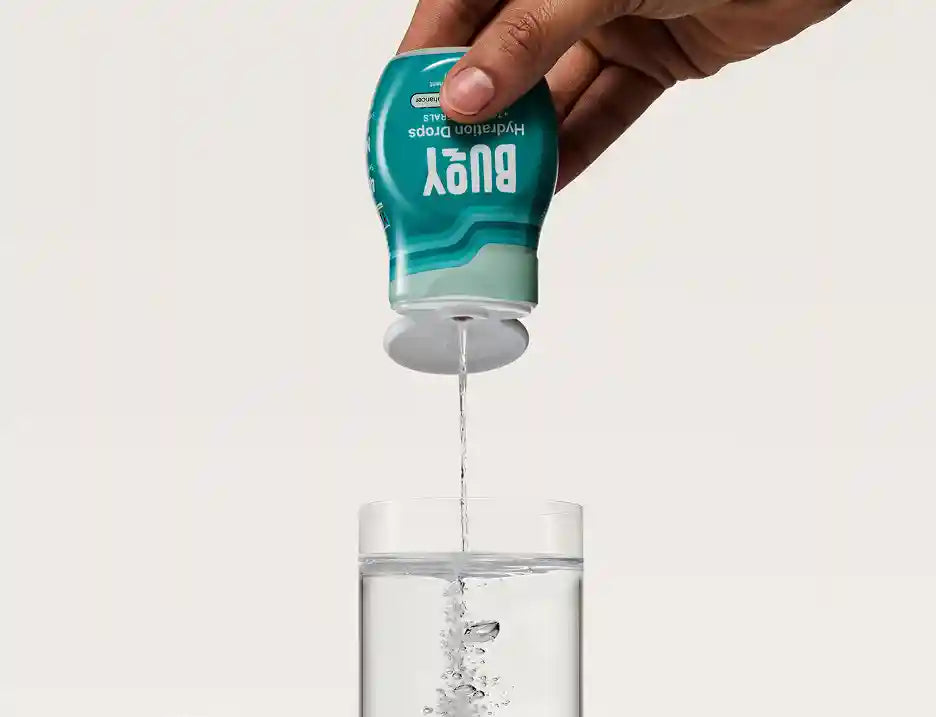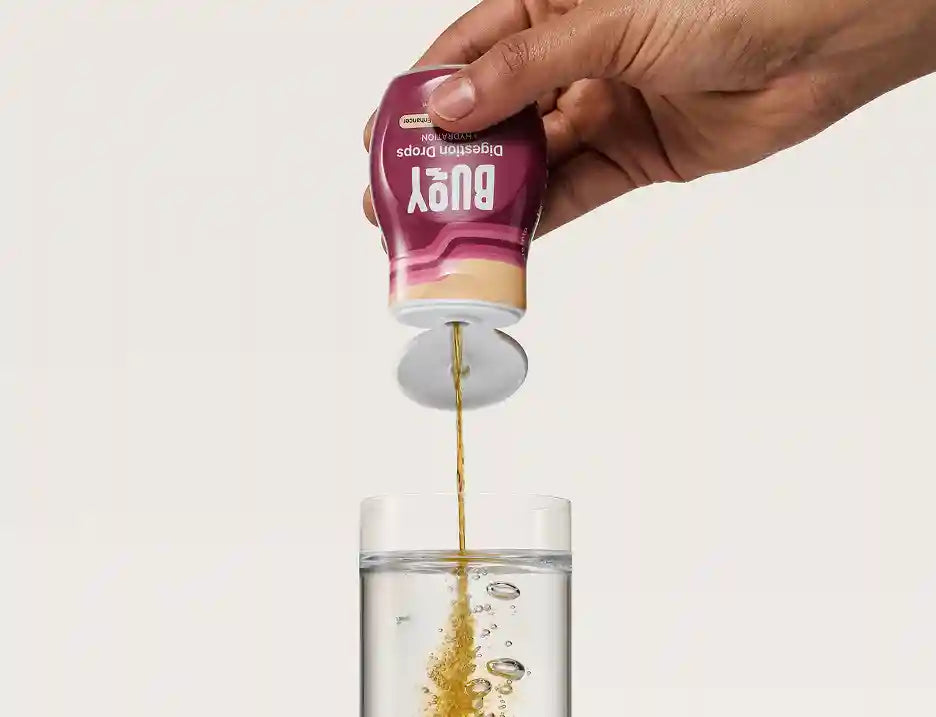
POTS-Friendly Diet: Foods to Support Your Body and Symptom Relief
Share
Did you know that what you eat—and drink—can have a big impact on your POTS symptoms? But figuring out exactly what your body needs often feels like a guessing game.
Living with Postural Orthostatic Tachycardia Syndrome (POTS) can be overwhelming, especially when it comes to your diet. The good news? A POTS-friendly approach to eating can make a noticeable difference in how you feel.
Essential Takeaways:
- Diet Plays a Key Role in Managing POTS Symptoms: Nutrition can significantly affect blood volume, energy levels, and symptom relief for those living with POTS. But figuring out the best foods for POTS to support your condition can often feel challenging.
- Small Changes Can Make a Big Impact: Simple POTS diet tips like focusing on hydration, increasing sodium, and eating nutrient-dense foods, can help reduce symptoms like dizziness and fatigue. These changes make it easier to manage daily life while supporting your overall well-being.
By prioritizing hydration, balanced nutrition, and small yet impactful dietary changes, you can improve symptoms like dizziness, fatigue, and brain fog while supporting your overall health. Let’s break it down.
- The Role of Diet in Managing POTS Symptoms
- POTS-Friendly Foods to Include in Your Diet
- Foods to Avoid with POTS
- Meal Planning Tips for POTS Patients
- Hydration and Electrolyte Balance
- Eating Well to Manage POTS
The Role of Diet in Managing POTS Symptoms
Managing POTS symptoms isn’t just about medical treatments—what you eat and drink plays a crucial role in how your body handles this condition.
Your diet can directly influence three critical factors: blood volume, energy levels, and overall symptom management. Let’s explore how.
Blood Volume
One of the hallmark challenges of POTS is low blood volume, which makes it difficult for your body to maintain proper circulation. This often results in symptoms like dizziness and lightheadedness, particularly when standing up.
A diet rich in sodium and proper hydration can help increase blood volume, improving circulation and reducing these symptoms.
Energy Levels
Fatigue is a common struggle for people with POTS, and balanced meals are essential for providing consistent energy throughout the day. By including a mix of whole grains, lean proteins, and healthy fats in your diet, you can combat energy crashes and stay more energized.
Symptom Relief
The right foods can do more than just keep you full—they can help stabilize blood sugar, improve circulation, and even reduce inflammation. These effects work together to ease common POTS symptoms like brain fog, fatigue, and dizziness.¹
Following a POTS diet plan isn’t just about better nutrition—it’s about giving your body the tools it needs to function more effectively and support your overall well-being. Small, intentional changes can make a big difference in how you feel day to day.
Learn more about what you should eat with this condition in our POTS Diet and Nutrition Guide.
POTS-Friendly Foods to Include in Your Diet
Not sure where to start? These best foods for POTS are great options for managing symptoms and boosting overall well-being.
High-Sodium Foods
Increasing sodium is one of the most common dietary recommendations for POTS. Many patients are advised to consume between 3,000 to 10,000 milligrams of sodium per day depending on their individual needs.
Here are a few tasty ways to increase your intake:
-
Cured Meats: Options like turkey or chicken deli slices, smoked salmon, or jerky can pack a salty punch.
-
Salted Nuts: Almonds, cashews, and pistachios are an easy snack that combines sodium with healthy fats.
- Soups: Opt for broth-based soups like chicken noodle or miso for a comforting way to boost your sodium intake.
Incorporating high-sodium foods into your diet can help boost blood volume and improve circulation, making it easier to manage POTS symptoms.² ³ However, sodium needs vary, so always consult your doctor to determine the right amount for you.
Hydrating Foods
Staying hydrated is essential for managing POTS. These fruits and vegetables are packed with water and electrolytes:
- Cucumbers and celery for crunch and hydration.
- Watermelon for a sweet, hydrating treat.
- Leafy greens like spinach and kale, which are high in water and nutrients.
Hydration is key to reducing POTS symptoms like dizziness and fatigue. Adding water-rich foods like cucumbers, watermelon, and leafy greens can keep you hydrated naturally while providing essential nutrients.² ³
For more natural ways to treat POTS, check out our guide to Treating POTS Naturally.

Fresh fruits are not only hydrating but also rich in nutrients and electrolytes, making them a great addition to a POTS-friendly diet.
Energy-Boosting Foods
Feeling fatigued? Add these energy-boosting options to your meals:
-
Whole Grains: Brown rice, quinoa, and oats release energy slowly to keep you going throughout the day.
-
Lean Proteins: Chicken, fish, eggs, and tofu are excellent for building and repairing tissues.
- Healthy Fats: Avocados, olive oil, and nuts provide long-lasting energy and support brain health.² ³
Incorporating whole grains, lean proteins, and healthy fats into your meals can provide steady, long-lasting energy throughout the day. These nutrient-dense options help combat POTS-related fatigue while supporting overall health.
Electrolyte-Rich Foods
Electrolytes like potassium, magnesium, and calcium are essential for nerve and muscle function. Here are some great sources:
-
Coconut Water: A natural alternative to sugary sports drinks.
-
Bananas: High in potassium to help regulate blood pressure.
- Dairy Products: Milk, yogurt, and cheese provide calcium and hydration.² ³
Electrolyte-rich foods like coconut water, bananas, and dairy products can support proper nerve and muscle function while aiding hydration. Including these in your diet helps manage POTS symptoms and maintain balance in your body.
Foods to Avoid with POTS
While some foods can help your POTS symptoms, others might make them worse. Try to avoid these common triggers:
-
Sugary Snacks: Foods high in sugar can cause blood sugar spikes and crashes, worsening fatigue.
-
Caffeinated Drinks: Coffee and energy drinks may increase heart rate and dehydration, both of which can aggravate POTS symptoms.
- Highly Processed Foods: Chips, packaged snacks, and fast food often contain additives that may exacerbate inflammation and fatigue.
The key here is to pay attention to your body. Everyone reacts differently, so track your symptoms to identify personal triggers.²
Get more POTS diet tips in our blog: Keto, Vegan or Paleo? Diet Plans You Should Avoid with POTS.
Meal Planning Tips for POTS Patients
Meal planning doesn’t have to be complicated. These simple strategies can help you stay on track:
-
Opt for Small, Frequent Meals: Eating smaller portions throughout the day can help maintain stable energy levels and prevent post-meal fatigue.
-
Prep Ahead: Cook larger portions of POTS-friendly dishes like soups, grilled chicken, or roasted veggies and store them in meal-sized containers for grab-and-go meals.
- Snack Smarter: Keep high-sodium and nutrient-rich snacks like salted nuts, cheese sticks, or fruit on hand for when hunger strikes.² ³ Get more quick and easy snack ideas in our guide to Healthy High-Sodium Snacks for POTS.
A little planning goes a long way toward making your POTS diet plan work for you and your schedule.

Boost your sodium intake effortlessly by adding Buoy’s Rescue Salt to your meals and drinks to support blood volume and manage POTS symptoms.
Hydration and Electrolyte Balance
Hydration isn’t just about drinking more water—it’s about maintaining the right balance of fluids and electrolytes to support your body’s needs. Here’s how:
-
Add Electrolytes to Drinks: Adding a light squeeze of Buoy’s electrolyte and mineral drops is an easy way to boost your electrolyte intake without added sugar.
-
Pair Meals with Hydration: Drink water or electrolyte-rich beverages with meals to improve absorption and support blood volume.
- Add a Pinch of Salt: Adding high-quality sea salt to your meals and drinks is a simple way to increase sodium levels and encourage fluid retention.⁴
Staying consistently hydrated and replenishing electrolytes is one of the most effective ways to manage POTS symptoms. Get more POTS Hydration Tips with our in-depth guide.
Eating Well to Manage POTS
Managing POTS with diet isn’t about perfection—it’s about making small, intentional changes that support your body and symptoms. Start by incorporating some of the healthy foods and POTS diet tips we’ve shared in this guide, and remember to listen to what your body needs.
Personalizing Your POTS Diet
While this guide provides a great starting point, it’s important to personalize your approach. Factors like comorbidities or other dietary restrictions may require additional adjustments. Learn more in our guide to Understanding POTS Comorbidities.
The Power of Nutrition for Symptom Relief
POTS nutrition is a powerful tool for symptom relief and overall health. By prioritizing hydration, sodium, and nutrient-dense foods, you can take meaningful steps toward feeling your best.
Explore More POTS Tips
Want to learn more about managing your POTS symptoms? Check out our other POTS guides for expert advice and practical strategies tailored to your needs.

Buoy’s Rescue Drops and Rescue Salt provide bioavailable sodium and ocean-sourced electrolytes to help manage POTS symptoms with no added sugars, sweeteners, flavors, or artificial ingredients for clean hydration.
References:
-
Cleveland Clinic. (2022). Postural Orthostatic Tachycardia Syndrome (POTS). Retrieved from https://my.clevelandclinic.org/health/diseases/16560-postural-orthostatic-tachycardia-syndrome-pots
-
UFC Health. (n.d.). The Best POTS Diet: Choosing Which Foods to Eat and Avoid. Retrieved from https://ucfhealth.com/our-services/cardiology/best-pots-diet/
-
Healthline. (2024). 5 Diet Tips for People with POTS. Retrieved
from https://www.healthline.com/health/pots-diet
- EDS Nutrition. Electrolytes for POTS and Dysautonomia: A Comprehensive Guide. Retrieved from https://edsnutrition.com/electrolytes-for-pots-guide/




